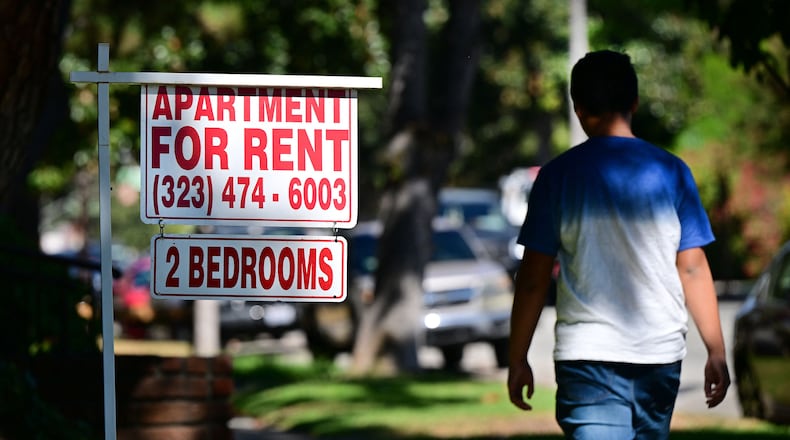Georgia is among a handful of states where the share of renters’ income going toward housing costs increased. In addition, rent increased by 6%, according to new data released by the U.S. Census Bureau.
In the 2023 American Community Survey published Thursday, a majority of states saw no significant change in the ratio of gross rent to income. In fact, in six states the share decreased, including Illinois, Kansas, Minnesota, New Mexico, New York, and West Virginia.
But from 2022 to 2023 in Georgia, the share of incomes going to rent increased. Rents in the state increased 6%. In Arizona, rent increased by 6.5%, and in Florida by 8.2%.
Nationally, the cost of renting, which includes rent and utilities, grew faster than real median home values for the first time in 10 years. Census Bureau officials say this was the largest annual increase in rental costs since 2011.
However, the agency said the data showed rent as a share of income did not rise nationally “despite significant increases in rental costs.” Officials said this could be due to renters earning more, as well as higher-income households entering the pool of households in rentals.
“The number of renter-occupied housing units increased by 0.9% in 2023. While changes to the cost of owning a home, such as higher interest rates or home values, could push households away from homeownership and toward renting, the share of households renting remained constant at 34.8% between 2022 and 2023,” officials added in a news release.
Credit: Matt Reynolds
Credit: Matt Reynolds
The data mirrors previous findings on cost burdens facing renters. Officials said 21 million renter households in the U.S. are spending more than 30% of their income on housing costs in 2023 — close to half of the 42.5 million renter households. While renters face a higher median housing cost as a portion of income compared to homeowners, close to 19 million homeowners are spending more than 30% of their income on housing costs, the survey suggests.
“Housing costs rose between 2022 and 2023 for both homeowners and renters. The median cost of housing for renters rose from $1,354 to $1,406 (after adjusting for inflation),” added Molly Ross, a survey statistician with the agency.
Homeowners insurance has also raised the financial pressure, Census Bureau officials say. They found that 5.4 million of the 85.7 million homeowners were paying $4,000 a year or more for insurance in 2023. In Florida, 1.2 million homeowners were paying $4,000 a year or more. In Texas, it was 784,000 homeowners; California, 560,000; New York, 272,000; and Louisiana, 215,000.
The findings come as homeowners have faced higher home insurance costs driven by climate change and increasing wildfires, hurricanes, and rising sea levels.
Ross said the survey data shows the share of renter household income that goes toward housing costs differs by race.
Within Black renter households, 4.6 million, or about 56%, paid more than 30% of their income on housing costs. About 53% of Hispanic renter households, or 4.8 million, were cost-burdened, officials said. About 47%, or 10.4 million, White renter households were cost-burdened.
Editor’s note: The article was updated to clarify that while Georgia renters saw an increase in the share of income going toward housing costs, it was not by 6%. Rather, the increase in rent was 6%.
About the Author
Keep Reading
The Latest
Featured



